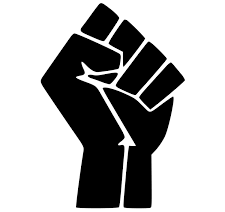Inclusion Matters to ALLFIE: Disabled Black Lives Matter
ALLFIE announces a new pressure group, set up in solidarity with Black Lives Matter movement, to promote the advancement of race and intersectional equality within our work, and speak out about the absence of experiences of Black Disabled People within Disability Rights and other movements.

This briefing introduces ALLFIE’s new group, Disabled Black Lives Matter (DBLM), and covers:.
- Who is Disabled Black Lives Matter (DBLM)?
- DBLM Objectives
- Key Terms/Definitions
Power and solidarity.
1. Who is Disabled Black Lives Matter (DBLM)?
In solidary with #BlackLivesMatter movement the group was set up on June, 10th 2020, in outrage against the brutal killing of George Floyd in America. It also provided a platform to speak out about the absence and experiences of Black Disabled People within the UK Disability Rights Movement and across other movements.
The group represents Black Disabled people and Disabled people of colour from an intergenerational and intersectional background. The overall aim of the group is to address racial and intersectional inequality of Black Disabled people within ALLFIE’s work and to encourage other DPOs/movements to achieve the common aim for race and intersectional equality.
2. DBLM Objectives
DBLM promotes the advancement of race and intersectional equality within ALLFIE’s work. DBLM has the following objectives, to be a pressure group:
- Promote “nothing about us without us” and “a voice of our own” through working in solidarity with other DPOs and movements to ensure our voices are heard and no longer ignored.
- Promote the social model of Disability, UN Convention on the Rights of Disabled People, race and intersectionality equality within our messages and body of work.
- Through partnership working, support organisations/movements to make decisions to achieve racial and intersectional equality.
- Through partnership working with other DPOs increase the voices of Black Disabled People and to achieve the common aim of equality and inclusion for ALL.
- Secure funding to develop DBLM and its future.
- To capacity build DBLM members to ensure sustainability of the group.
3. Key Terms/Definitions
Black people and People of Colour:
We define Black people in the context of our work and this includes People of Colour as an additional “non-white group’ to ensure identity representation.
Social Model of Disability
Disabled people are seen as being disabled not by their impairments (such as visible and invisible) but by society’s failure to take their needs into account. Being Disabled is part of the normal spectrum of human life: society must expect Disabled people to be there and include us in all aspects of life.
Read more about the Social Model of Disability on ALLFIE’s website.
Mutual exclusive:
This is when our identities are viewed as single and separate issues. This is a barrier because the focus of the agenda is on ‘disability’ only and does not think about other identities of Disabled people, for example race and gender and how this can affect our experiences as Disabled people.
Intersectionality:
It is a way to help us to understand how people can have more than one identity. For example a person can be black, disabled, lesbian and a woman. The failure to think about the different experiences results in more oppression for some disabled people. This also results in ‘intersectional erasure’ because the focus of the agenda is only on ‘disability’. ‘Intersectional erasure’ means to ignore individuals different identities.
Racism:
This happens when others treat people negatively because of their skin colour. There are different types of racism such as institutional and direct racism. For example direct racism could be calling someone horrible names based on the colour of their skin. Institutional racism creates the barriers that disadvantage others because of the colour of their skin. The most recent example of institutional racism can be found in the Stephen Lawrence report (1999).
![Allfie [logo]](https://www.allfie.org.uk/wp-content/themes/allfie-base-theme/assets/img/allfie-logo-original.svg)



